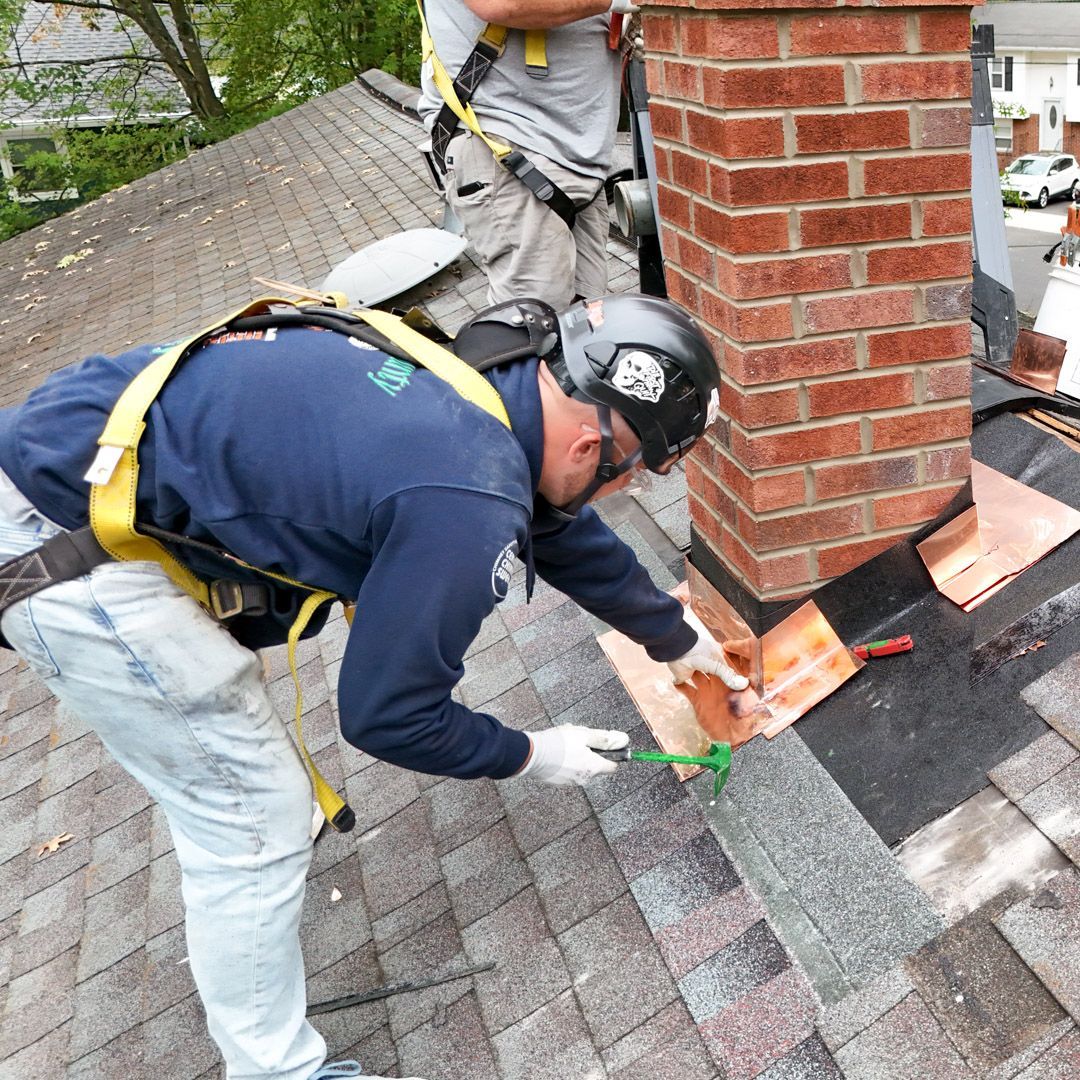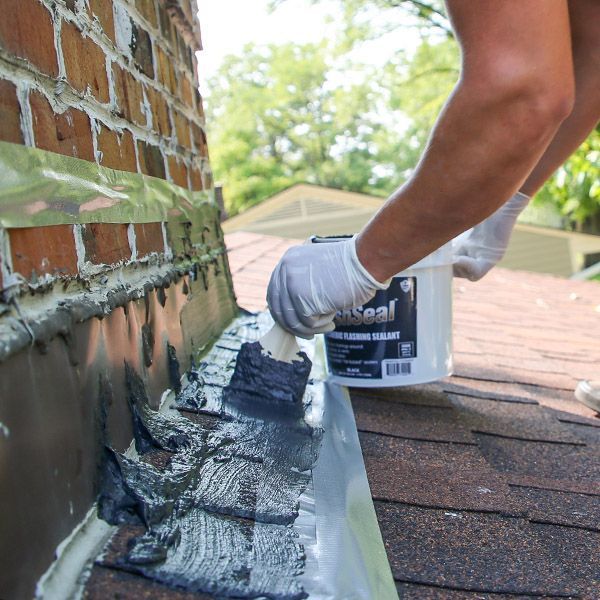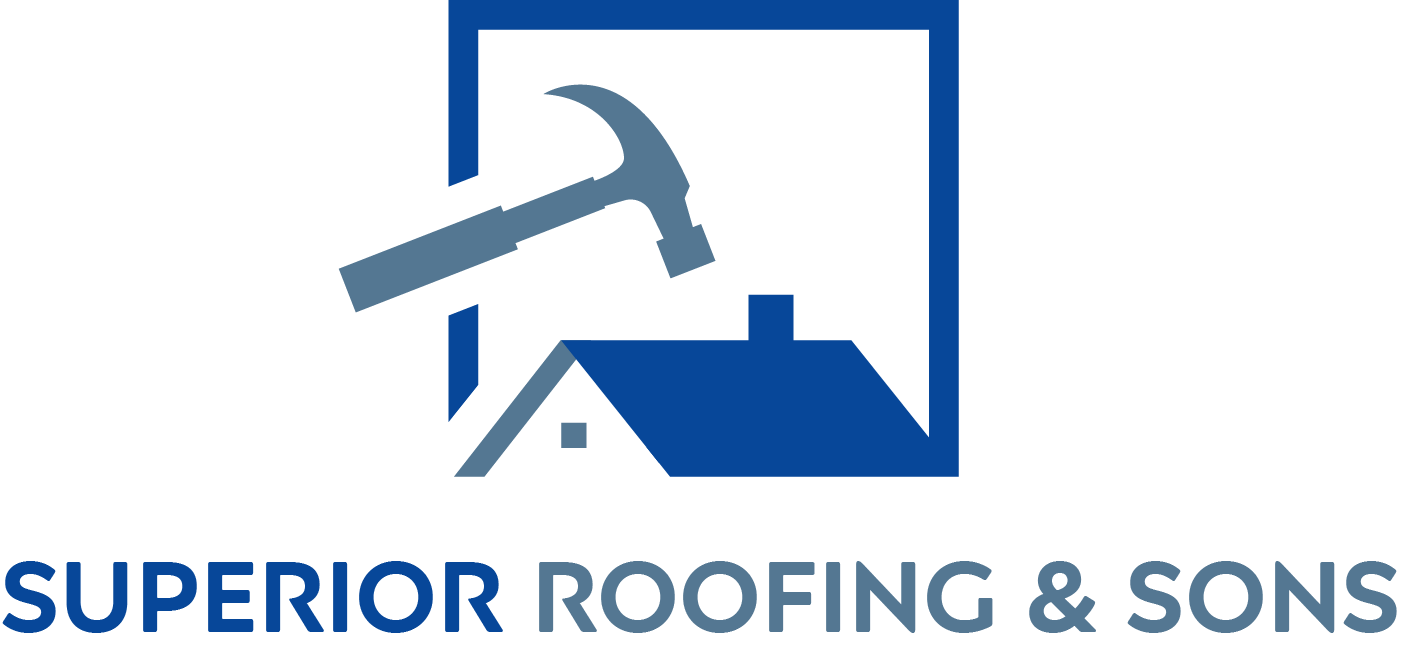Chimney Flashing Repair
Chimney flashing is the metal barrier that seals the joint between your chimney and roof, preventing rain or snow from getting inside. When this flashing wears out or gets damaged, it needs quick repair to avoid costly issues like mold, wood rot, or structural damage to your home.
Our chimney flashing repair service at Superior Roofing & Sons focuses on identifying leaks and repairing or replacing damaged flashing to keep your home dry and safe. We inspect the flashing carefully, looking for cracks, gaps, or rust, and then use high-quality materials to fix it. We make sure the flashing fits correctly with your roof and chimney, providing a tight seal that lasts. You can count on us for reliable work that matches your home’s needs.
We understand how frustrating leaks can be, especially when they affect your living space. That’s why we respond quickly and handle the repair thoroughly so you don’t have to worry about further damage. With our experience and attention to detail, we help you maintain your roof and chimney’s integrity, protecting your home from the elements year-round.
Chimney Flashing Repair Process
Our chimney flashing repair service focuses on finding leaks and fixing them with durable materials. We carefully inspect your flashing, choose the right repair method, and check every detail to make sure your chimney stays watertight. This process helps you avoid water damage and costly repairs later.
Inspection and Assessment
We begin by examining your chimney flashing closely, looking for cracks, gaps, or loose sections. Our team checks where the flashing meets the roof and the chimney to spot leaks or rust. Using moisture detectors and visual inspection, we determine how much damage there is.
We also inspect the counter-flashing, which protects the main flashing from weather. This helps us decide if a simple patch will work or if parts need full replacement. Accurate assessment means we fix only what’s necessary, saving you time and money.

Repair Methodology
Once we know the problem, we clean the flashing area to prepare it for repairs. For small cracks or loose seams, we use high-quality waterproof sealants and roofing cement to fill gaps. If the flashing is badly damaged or corroded, we replace it with new metal flashing like aluminum or copper.
We secure the flashing tightly to your chimney and roof, making sure overlaps are sealed properly. Where needed, we install or repair counter-flashing to add extra protection. Our goal is to restore a strong, leak-proof barrier that lasts.

Quality Assurance Measures
After the repair, we check for any possible spots where water could get in. We perform water tests by lightly spraying the chimney area to confirm there are no leaks. Our team also reviews the sealant and flashing edges for proper adhesion.
We provide recommendations to help you maintain your chimney flashing and schedule future inspections. With our detailed final check, you can be confident that your chimney flashing is secure and ready to protect your home.

Signs You Need Chimney Flashing Repair
You might notice issues around your chimney that signal flashing problems. These often show as water leaks, damaged flashing parts, or stains inside your home. Catching these early helps prevent bigger damage.
Visible Water Leaks
When flashing fails, water can leak around your chimney during rain or snow melt. You may see water dripping inside your attic or near the chimney base. Sometimes, water pools on the roof next to the chimney.
If you spot wet spots or hear dripping sounds after storms, your flashing could be cracked or loose. Water intrusion here often leads to wood rot or mold if left unrepaired. We can inspect your flashing and fix leaks to keep your home dry.
Damaged or Missing Flashing
Flashing secures the chimney to the roof. Over time, rust, cracks, or loose flashing pieces can appear. In some cases, flashing might be partly missing due to weather or poor installation.
Damaged flashing won’t protect your roof joints properly, letting water inside. You might notice bent metal, gaps, or corroded areas when checking your chimney roof area. Our team replaces or repairs flashing with durable materials that fit your home.
Interior Water Stains
Water hitting damaged flashing often stains ceilings or walls near your chimney inside the house. Look for yellow or brown water marks, peeling paint, or bubbling drywall.
These stains mean water is traveling behind your walls. If you see this, flashing repair is urgent to prevent structural damage. We use careful checking inside and outside to find flashing leaks causing these stains and fix them right.
Preventive Maintenance for Chimney Flashing
Proper care of your chimney flashing helps stop leaks and damage before they start. Regular checks and small repairs keep your roof and chimney in good shape. We focus on key actions that protect your home from water intrusion and reduce costly repairs.
Seasonal Inspections
We recommend inspecting your chimney flashing at least twice a year, especially in spring and fall. These checks catch cracks, rust, or loose metal before heavy rain or snow worsens the damage. During inspections, we look for:
- Gaps or separations between flashing and roof materials
- Signs of corrosion on metal flashing
- Damaged sealants or worn-out caulking
- Water stains or rust spots on surrounding surfaces
If you notice any bubbling paint, water stains, or dampness near the chimney base, those are signs inspections should happen sooner. Early detection is key to preventing water leaks.
Routine Maintenance Recommendations
Routine maintenance includes cleaning debris and checking sealants around the flashing. We advise removing leaves or dirt buildup that can trap moisture and cause rust.
Applying a high-quality roofing sealant on joints and seams every few years strengthens the flashing’s water protection. Make sure any cracked or peeling caulking is replaced quickly.
If your flashing shows advanced rusting or large gaps, it’s safer to call professionals like us for repair or replacement. Regular upkeep extends flashing life and protects the rest of your roof from water damage.
FAQs on Chimney Flashing Repair
Chimney flashing repair involves checking for leaks, damage, and wear. You need to know how to spot issues early, maintain the flashing, and understand costs and timelines. Choosing the right company is also important for quality work and lasting results.
What are common signs that indicate the need for chimney flashing repair?
You may notice water stains on your ceiling or walls near the chimney. Rust or cracks on the flashing, missing or loose sections, and mold growth around the chimney base also show damage. In some cases, you might smell dampness inside your home after rain.
How should I maintain my chimney flashing to prevent frequent repairs?
Regular inspections, especially after storms, help catch small problems early. Keep the flashing clear of debris and check for rust or gaps. We also recommend sealing around the edges every few years to keep it watertight.
What is the typical cost range for professional chimney flashing repair services?
Costs usually fall between $150 and $500. Prices depend on the damage size and materials needed. Complex jobs or full replacements can be higher. We give clear estimates before starting work.
Can damaged chimney flashing lead to more serious roofing problems?
Yes. If water gets past the flashing, it can damage your roof decking, insulation, and even the chimney structure. This can lead to costly repairs if left untreated. Fixing flashing early prevents bigger issues.
How long does it typically take for a roofing company to repair chimney flashing?
Most flashing repairs take a few hours to complete. We schedule jobs to minimize disruption and usually finish within one day unless there are unexpected problems.
What factors should I consider when choosing a roofing company for chimney flashing repair?
Look for experience with chimney flashing and good customer reviews. Make sure the company uses quality materials and offers warranties on their work. Clear communication and prompt scheduling are also key factors we prioritize.
